Tortles are a race of humanoid tortoise-kin from the southern region of Chult in the Forgotten Realms.
As they are typically a reclusive race that likes to keep to themselves and their own, most people across the Forgotten Realms only know of Tortles through rumors and stories and have never actually met one.
However, some Tortles get inspired to begin traveling and going on adventures, so you can still definitely use one for your character. Welcome to a DnD Tortle Guide.
Key Info Up Front
- Books: The Tortle Package, Explorer’s Guide to Wildemount, Mordenkainen’s Monsters of the Multiverse
- Editions: 2e, 3e, 5e
- Appearance: Tortoise-like Humanoids standing around 6 feet tall and weighing an average of 500 pounds
Tortle Lore
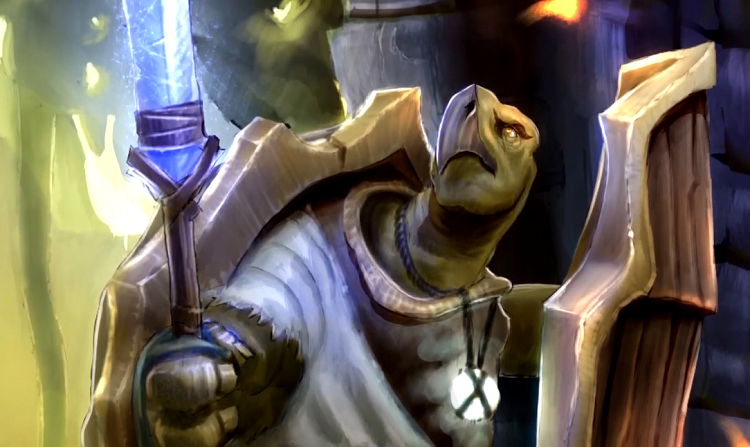
Tortles were once spread across the mainland of southern Chult. However, when the Spellplauge sundered parts of the world, they claimed a peninsula that had become separated from the main island by a narrow strait as their home.
The strait provided a natural barrier against their many natural predators in Chult and allowed them to group and handle any that made it across in groups. This permitted the Tortle to prosper and grow as a species over the many years since.
However, the Tortle is an exciting race in how isolated they prefer to live. While their homeland is a smaller island well known to be the home of the majority of the race, they more often than not live separately from one another.
It is expected of Tortles to live alone in small hovels or homesteads while keeping in contact with the rest of their peers so that they can all come together when it is required of them. They are also known to care deeply about developing strong friendships with those they often see.
Another exciting part of the Tortles is that they only reproduce at the end of their lifespan, usually around a year before death. I love this part of the Tortle because it opens up some interesting roleplay opportunities.
When Tortles eventually have children, they expect to spend the rest of their lives passing on all of the information they have gathered over their oddly short average lifespan of 50 years to their young.
This means that all Tortles hardly know their parents and spend much of their lives pursuing knowledge to pass on to their young.
Because of the shells on their backs, which they can recede into if necessary, many Tortles also adopt a nomadic lifestyle. Rather than staying in one area where their knowledge will be limited to their immediate surroundings, these Tortles view their shells as their home.
Their shells also prevent them from wearing most armor but allow them to pull back into it to protect themselves whenever they feel threatened.
Tortle Traits
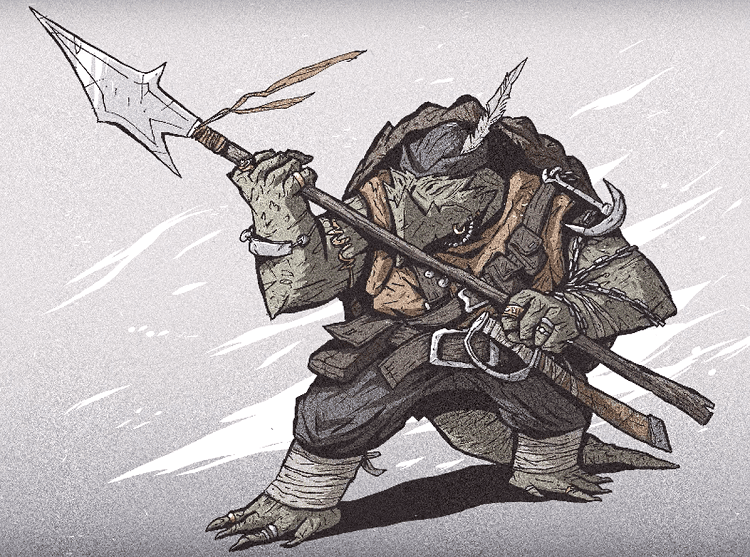
There are technically two versions of the Tortle that players can choose to play depending on their available sources. If you want to play a Tortle, I recommend checking with your Dungeon Master first to see if they prefer which version you use. The first was released in the free supplement called The Tortle Package.
This version was then published in the Explorer’s Guide to Wildemount, with a newly updated Tortle published in Mordenkainen Presents: Monsters of the Multiverse. So, I want to go over both versions here so that you can see which you may prefer.
The Tortle Package/Explorer’s Guide to Wildemount
The original version of the Tortle in 5e has them increasing their Strength by two and Wisdom by one while also describing them as orderly creatures that tend to lean toward Lawful Good alignments.
It says that they can sometimes become greedy and self-centered enough to be considered evil but that they are creatures of habits and rituals that rarely fit chaotic alignments. They also come with a base walking speed of 30 feet, so they don’t seem to have inherited the slow movement of their tortoise brethren.
The original Tortles also come with the Claws feature that makes their unarmed strikes deal extra damage, coming out to 1d4 + your Strength modifier.
This also modifies the damage type of your unarmed strikes from bludgeoning to slashing. Tortles are also able to hold their breath for up to one hour at a time, although they aren’t natural swimmers.
Now, you may be thinking, what about that big shell they have to contend with? Well, it gives them two unique features.
The first is Natural Armor, which prevents you from wearing most armor but also gives you a base Armor Class of 17. Your Dexterity modifier cannot increase this value, but it can be improved by equipping a shield to bump it up to 19.
The shell also comes with the Shell Defense feature, allowing players to withdraw into their shells. This increases their Armor Class by four and gives them advantage on Strength and Constitution saving throws.
However, it also prevents movement, gives disadvantage on Dexterity saving throws, and restricts players to only using a bonus action to emerge from their shell.
Finally, the race’s reliance on surviving on their own makes them come with proficiency in Survival. Every Tortle character also starts with the Common and Aquan languages at character creation.
Mordenkainen Presents: Monsters of the Multiverse
Republishing the Tortle race did not bring a complete overhaul or any significant changes but gives players some more options to help adjust the race to their liking.
The first change is implementing the new system for ability score increases. Rather than having strict increases determined by a character’s race, players are instead able to place them how they wish.
To do so, they can either increase three Ability Scores by one or one by two and another by one.
The new version of the Tortle also opens up their skill proficiency with more options. Rather than having to take proficiency in Survival, players can pick between Animal Handling, Nature, Medicine, Perception, Stealth, or Survival.
Other small changes include increasing their unarmed strike damage from 1d4 to 1d6 and allowing them to be either Medium or Small size.
Roleplaying a Tortle
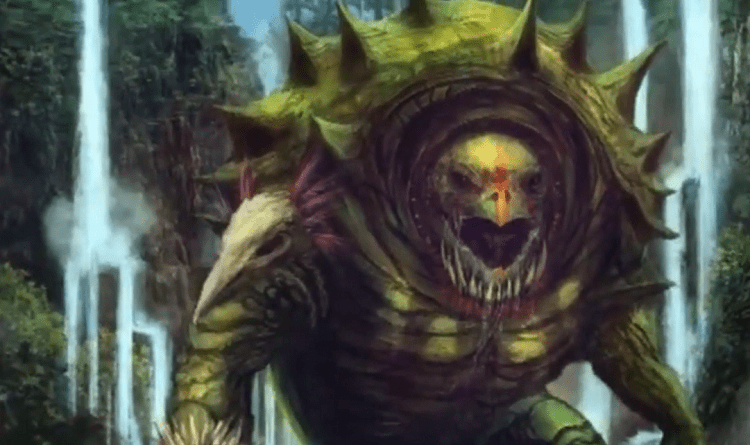
When roleplaying a Tortle, I have always found it essential to focus on their nomadic lifestyle and independence. Your character’s backstory and selected background will undoubtedly impact this.
Still, I think it is important to consider what has made your Tortle seek others to travel or adventure with.
This is very unusual behavior for a Tortle, so it is important to think of what has driven them to do so, whether it be knowledge of a threat that they can’t face themselves, a desire to rebel against Tortle cultures, or an extremely close bond with another party member that asked them for help.
Figure out why your Tortle has broken away from the norms of their people can help define how they interact with others and the wider world.
If joining the party is the first time they’ve traveled to civilization, they should be amazed at larger cities like Neverwinter or Waterdeep while maybe even getting uncomfortable around large crowds or by all the noise of town squares and busy taverns.
When interacting with your party, I also recommend focusing on how meaningful and strong close friendships are for most Tortles.
This can be an excellent tool for parties of adventurers that don’t all share an origin story in the campaign, as it can help solve the common issue of it not being clear why the party is together.
If your Tortle character creates a strong enough bond with every party member, it is easy for them to act as the de facto glue that holds everybody together.
Because of this bond, it also makes a lot of sense for Tortles to fulfill support roles in combat, but playing a Face outside of combat doesn’t make much sense as they aren’t used to socializing with the wider world.
They also naturally fit into nature-based clerics like Druids and Rangers or even Paladins that take the Oath of the Ancients. However, you can make the Tortle work in just about any class in 5e, and picking one that doesn’t naturally fit can lead to some interesting stories for your character.
A Ranger Tortle makes a lot of sense, but a Warlock Tortle that found an ancient power hidden in a dense swamp and made a pact with it holds some interesting potential.
The Best Tortle Classes: Druid
The Druid class perhaps fits with Tortles the most naturally. It fits in very well with the survivalist nature of Tortles and helps explain how they manage to survive the wilds despite being entirely on their own.
Their solid natural Armor Class also helps cover the Druid’s weaknesses since they don’t usually have armor proficiencies or the need for high Dexterity.
The lore of Tortles also fits in very well with the flavor of Druids. However, I tend to lean toward Druid subclasses that don’t rely on Wild Shape too much.

This is just personal preference, but with the Tortle already being a tortoise-kin, having them turn into animals doesn’t feel as exciting to me.
If you end up playing a Druid, you can also use the subclass to help define your character’s look at the world and how they interact with it, which helps make them feel more unique.
Republishing the Tortles also works even better for the Druid because their list of skill proficiency options aligns very well with the Druid’s to help round out the class.
If you end up playing the Druid, you’ll also have a few different options for which role in the party you want to fill, depending on which subclass you choose from below.
Druid Subclasses
Circle of Dreams (Xanthar’s Guide to Everything)
The Circle of Dreams focuses on filling a support role with healing and utility options. However, its options aren’t as strong or universal as other classes or Druid options.
The subclass also comes from a tie with the Feywild, so it doesn’t align as naturally with the Tortle lifestyle as other Druid subclasses.
However, a connection to the Feywild does provide very interesting reasoning for your character’s breaking from their cultural norms, which I think could be interesting to roleplay.
Circle of Spores (Guildmasters’ Guide to Ravnica and Tasha’s Cauldron of Everything)
The Circle of Spores subclass is an extremely strong offensive subclass for the Druid. It can lead to some of the strongest Druid builds, especially when it comes to melee combat, but doing so can be very difficult.
Because of this, I only recommend playing this subclass if you are comfortable with the mechanics and character building of 5e.
Circle of Stars (Tasha’s Cauldron of Everything)
The Circle of Stars subclass has solid healing and offensive options. It brings some new mechanics, but it is straightforward enough for newer players to take it on.
I love this subclass for the Tortle because it brings a unique celestial element to the Druid class, and it works exceptionally well with Tortles that take the Hermit background.
Circle of Wildfire (Tasha’s Cauldron of Everything)
Druids that belong to the Circle of Wildfire revere the role that death and destruction play in the cycles of nature. This subclass allows players to use their wild shape to summon a firey pet that buffs their fire damage and gives some unique combat options.
This Druid subclass is a fun twist on the class, and having a fun little fire pet is an enjoyable fit for a Tortle, but the class does rely heavily on fire damage to be effective.
Circle of the Land (Player’s Handbook)
This subclass is for Druids that want to focus almost entirely on spellcasting. The Circle of the Land is also generally very simple, so it is a good option for players who haven’t played 5e before or want to delve into playing a spellcaster for the first time.
This subclass also works very well with the Tortle because of its focus on working with nature and living among it symbiotically.
Circle of the Moon (Player’s Handbook)
The Circle of the Moon is about doubling down on the Druid’s wild shape mechanic, allowing them to turn into various animals during combat.
This can enable the Druid to fulfill melee damage or tank roles. While I don’t like the approach of Tortles using wild shape a lot, that is just personal preference, and this subclass can work very well with a Tortle that has spent its entire life learning about and becoming one with nature.
Circle of the Shepherd (Xanthar’s Guide to Everything)
The Circle of the Shepherd is a strong subclass option for players who like summoning creatures and supporting their party members. However, you should only take this subclass if you are comfortable summoning creatures constantly and know how to do so well.
If you try to use this subclass for its support capabilities, it will end up seeming vastly underpowered. This subclass doesn’t directly conflict with playing a Tortle, but it doesn’t fit as naturally as some other options.
Here’s our complete Circle of the Shepherd Guide with everything you need to know about this Druid sublcass.
Ranger
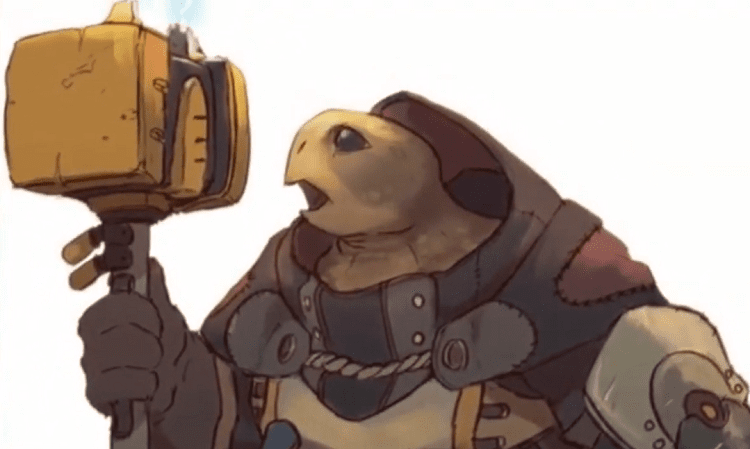
The Ranger is the second nature-based class in 5e. What differentiates it from the Druid, however, is less of an emphasis on spellcasting and more on nature’s beasts.
While the Ranger still has a symbiotic relationship with nature, their abilities focus more on hunting beasts, teaming up with animals, and navigating wilds.
Tortles make great Rangers because the class emphasizes being able to navigate the wilds and dominate the life found throughout them. Many Ranger subclasses also come with different types of companions and focus on surviving based on their knowledge and skills.
These elements work very well with the Tortle because their bond with a companion can be a lot of fun due to their isolationist nature, and their drive to pass knowledge to their descendants works exceptionally well with the Ranger.
The Ranger’s subclasses have also brought a lot of great diversity and options to the class. When 5e was first published, the Ranger was thought to be the weakest and most underwhelming of the classes.
Still, the modified version of the Beast Master and many other subclasses have helped bring it into equal standing with the other classes.
Ranger Subclasses
Beast Master (Player’s Handbook)
The Beast Master is a flashy Ranger subclass that gives them a constant animal companion. The subclass represents rangers that are hardened from living in the wilds on their own with only their pet companion, which makes it a perfect fit for Tortles.
However, an alternate companion feature in Tasha’s Cauldron of Everything is much simpler to use and more effective than what is found in the Player’s Handbook. I can’t recommend using the alternate feature above the base version enough as it will make you have much more fun.
Drakewarden (Fizban’s Treasury of Dragons)
The Drakewarden subclass is a dragon-themed version of the Beast Master but comes with some exciting trades to consider, such as its companion being less flexible than the Beast Master’s.
The companion having to be a Drake can also lend itself well to an exciting origin story for a Tortle character but will require some more legwork to make it work and flesh out how your character came in possession of such a unique companion to begin with.
Fey Wanderer (Tasha’s Cauldron of Everything)
This subclass brings some unique mechanics and options to the Ranger class, which can vastly change your character’s playstyle. However, when it is played well, it can be very powerful.
However, its focus on the Feywilds doesn’t align itself very well with the nature of Tortles, but this can be used to add some exciting foils to your character as well.
Gloom Stalker (Xanathar’s Guide to Everything)
I only recommend playing the Gloom Stalker if you’re going to play a campaign that features a lot of dungeons or caves.
It also works exceptionally well in an Underdark campaign, and if you’re playing in a campaign that the Gloom Stalker is well-suited for, you’ll be hard-pressed to find a better Ranger subclass. Otherwise, you’ll struggle to find a use for most of its features.
Horizon Walker (Xanthar’s Guide to Everything)
The Horizon Walker subclass allows the Ranger to travel between planes of existence and teleport around the battlefield to strike enemies where they are the weakest.
This makes for an excellent Striker character while offering some fun perspectives for your Tortle from surviving and traveling through the planes.
Hunter (Player’s Handbook)
The Hunter subclass is the most basic Ranger option that focuses on increasing their martial abilities. It is very straightforward to play, so it is good for new players but will likely be a bit boring for ones with more experience.
Monster Slayer (Xanthar’s Guide to Everything)
The Monster Slayer works similarly to the Hunter, with a more significant focus on pure damage output and less flexibility or stealth options. Its flavor focusing on hunting down more significant trophies to claim also doesn’t mesh very well with the nature of Tortles.
Swarm Keeper (Tasha’s Cauldron of Everything)
This Ranger subclass is pretty simple, but it also can be extremely fun to play. It comes with a swarm of creatures, but they don’t have to be bugs necessarily. Instead, the Ranger’s controlled swarm can be creatures like pixies, lizards, or raccoons.
When picking your swarm creature, I recommend talking with your Dungeon Master beforehand to pick something that would make sense for where your character normally lives.
Bard
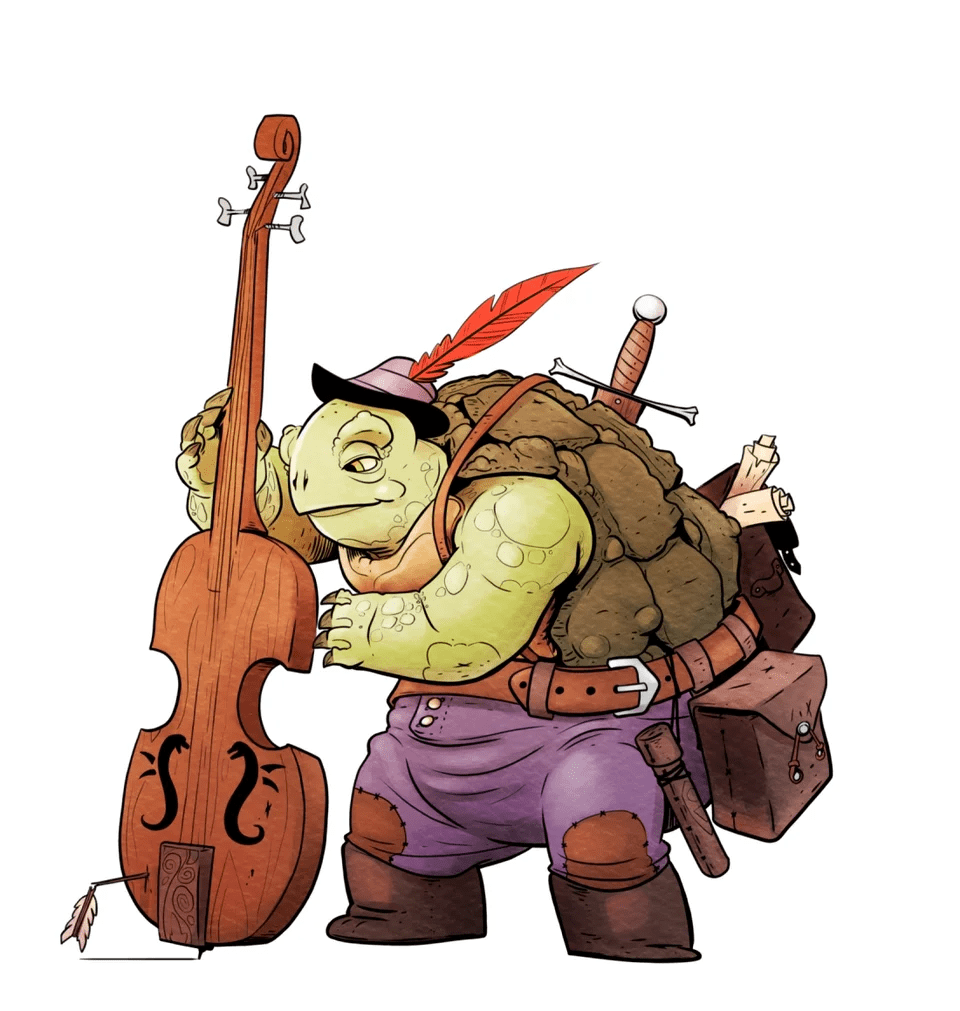
The flavor of a Bard can also be a lot of fun to play around with as a Tortle. With how long Tortles live alone in the wilds, it is a great fit to imagine them entertaining themselves with rustic music.
This portrayal is not what most players imagine when picturing a Bard, but adapting it for a Tortle brings some fun flavor options. The Bard subclasses also have a ton of variety, allowing players to adapt the class to fill any role their party needs covered.
However, I recommend not playing a Bard Tortle as the party’s Face since the Tortle’s isolative nature doesn’t make a lot of sense in the role, but it can still work with enough effort on the player’s part.
The Bard’s Bardic Inspiration feature also works very well as a Tortle, who would naturally want to take care of their dear new friends.
Bard Subclasses
College of Creation (Tasha’s Cauldron of Everything)
The College of Creation is about creating objects with your magic. This is normally used for enhancing performances, but a Tortle living in the wild could also use it to create supplies and resources that would otherwise be hard to come by.
College of Eloquence (Mystic Odysseys of Theros and Tasha’s Cauldron of Everything)
The College of Eloquence focuses on weaving magical spells and effects into poetry and stories. The subclass is a basic approach to playing a Bard, making it a strong option for players at every level of experience.
Its flavor works exceptionally well with Tortles. However, it focuses on buffing the character’s Bardic Inspiration feature, meaning it needs to fill a support role.
Want to know more about this College? Check out this College of Eloquence Guide.
College of Glamour (Xanathar’s Guide to Everything)
This subclass doesn’t have a dedicated niche to fill like many other Bardic subclasses, which can leave it feeling a bit underpowered in comparison.
It focuses on some support utilities and Charm effects, which can be difficult to use since there aren’t many options. It also doesn’t work very well as a Tortle, so I recommend choosing a different option from this list.
College of Lore (Player’s Handbook)
The College of Lore abandons the Bard’s nominal martial abilities to get more spell options and skill proficiencies. This subclass’ flavor of passing on stories and information from the world also works well with the Tortle since it highlights the ancestral knowledge that has been passed down to them.
College of Spirits (Van Richten’s Guide to Ravenloft)
The College of Spirits subclass allows Bards to interact with the spirits of the dead. This subclass adds a lot of tracking to the Bard and brings a dose of randomness to the class, which is not for every player.
Its flavor does fit with the Tortle decently well, but the subclass is generally a lot weaker than other options, so I recommend only picking up this one if you love the flavor.
College of Swords (Xanthar’s Guide to Everything)
The College of Swords Bard is a martial-focused subclass similar to the College of Valor below but places more emphasis on offensive options.
However, its signature feature, Blade Flourish, is mechanically really bad. I can’t see a situation where taking this subclass over the College of Valor makes much sense.
Find more about the College of Swords in this guide.
College of Valor (Player’s Handbook)
This subclass turns the Bard into a martial class. This option isn’t terrible, but it doesn’t measure up to other similar options like the Hexblade Warlock.
I also don’t think this subclass works very well with the Tortle. Still, it isn’t a terrible option if you are playing with a smaller party that needs some martial ability alongside support utility.
College of Whispers (Xanathar’s Guide to Everything)
This subclass is a good option for a roleplay-heavy campaign. However, if your campaign is mostly about combat, this subclass isn’t a strong option. The College of Whispers also has a sinister undertone that I don’t think fits the Tortle very well.
See also: Comprehensive College of Whispers Guide.
FAQs
Question: What Books is the Tortle in?
Answer: The Tortle can be found in the 5e books Explorers of Wildemount and Mordenkainen Presents: Monsters of the Multiverse.
Question: Is the Tortle Good in 5e?
Answer: The Tortle is very good for most classes and roles in 5e, especially spellcasters who can get the most of their naturally high Armor Class.
Question: Can Tortles Swim in 5e?
Answer: Tortles are not natural swimmers, so they follow the same swim rules as most player races. However, they can hold their breath underwater for up to a full hour.
Conclusion
Tortles are a very unique and exciting race for players to pick up. Its unique lore and fun racial features offer players some fun new options to play around with.
The newest publishing of the Tortle in Mordenkainen Presents: Monsters of the Multiverse also helps them be a universal race, allowing them to fulfill nearly any role on the battlefield.
I love playing as a Tortle since they stand out so much from other races and offer great roleplaying opportunities.
- Steel Defender 5e Guide - September 5, 2022
- Harengon 5e Guide - August 24, 2022
- Shambling Mound 5e Guide: The Most Terrifying Plant - August 21, 2022

